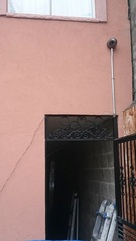
Video Surveillance system , also known as Closed Circuit Television (CCTV) refers to the usage of video cameras for transmitting signals from specific place to digital video recorder (DVR).
The video surveillance system consists of cameras which capture the signals, connecting cables which relay the signals to the remote station, a server which contains the software and other drivers that power up the system, the software which contains the algorithms that coordinate the activities of the entire system and DVRs in which the final signals are projected and output.
In recent times, there has been a drastic improvement in the Video Surveillance Technology thanks to the incorporation of certain advanced features. These include Facial Recognition Features which automatically identifies and verifies a person from a digital image captured by the CCTV Camera and the Video Content Analysis software which automatically analyses temporal events in a video.
The video surveillance system consists of cameras which capture the signals, connecting cables which relay the signals to the remote station, a server which contains the software and other drivers that power up the system, the software which contains the algorithms that coordinate the activities of the entire system and DVRs in which the final signals are projected and output.
In recent times, there has been a drastic improvement in the Video Surveillance Technology thanks to the incorporation of certain advanced features. These include Facial Recognition Features which automatically identifies and verifies a person from a digital image captured by the CCTV Camera and the Video Content Analysis software which automatically analyses temporal events in a video.
Video Surveillance Installation refers to the process of fixing all the various components of a video surveillance system in place in order to effectively achieve the purposes intended.
These include:
Video Surveillance Installation may also include inductions, training and other educative programs that are tailored towards family end users with how to use the systems once they are set up. These services are usually done at a fee by several telecommunications firms.
The uses of video surveillance systems include but are certainly not limited to the following:
These include:
- Mounting the cameras in strategic locations for them to be able to capture the images so desired; fixing and laying all the connective cables from the cameras to the servers
- Installing and configuring all the program software in such a way as to enable them to be compatible with the rest of the hardware components of the video surveillance systems
- Set up and configure the Router so user can remote to the cameras on their smartphones ,computer through the network placing the services in strategic locations within the control room.
Video Surveillance Installation may also include inductions, training and other educative programs that are tailored towards family end users with how to use the systems once they are set up. These services are usually done at a fee by several telecommunications firms.
The uses of video surveillance systems include but are certainly not limited to the following:
- Crime Prevention in which case the CCTV cameras are mounted in sensitive places such as streets, neighbourhoods, parking lots e.t.c with the aim of monitoring the movements of those who roam around these areas.
- Studies after studies have proved that they are effective in cutting down crime rates since would-be criminals tend to exercise restraint when in these areas. Furthermore, they facilitate police investigations into crimes in the event of their commission
- Schools and Educational facilities to keep track of uncouth student behaviours, monitor visitors to and from the school premises and to record criminal activities for the purposes of easier investigations later on.
- Monitoring Retail Merchandise in which case they are installed in stores and supermarkets to help reduce pilferage of goods and to help in conducting alleged criminal investigations later on
- Transportation and Traffic in which case, the cameras are mounted along highways, subways, airports and other sensitive areas for the purposes of monitoring traffic flow, effective traffic coordination and recording of any criminal involvements
- In Industries that are dangerous for human beings such as sewerage and exhauster services, chemical industries and explosive industries respectively. In this case, they are used for taking measurements, controlling production processes and regulation of temperatures and other aspects of a production process.

 RSS Feed
RSS Feed